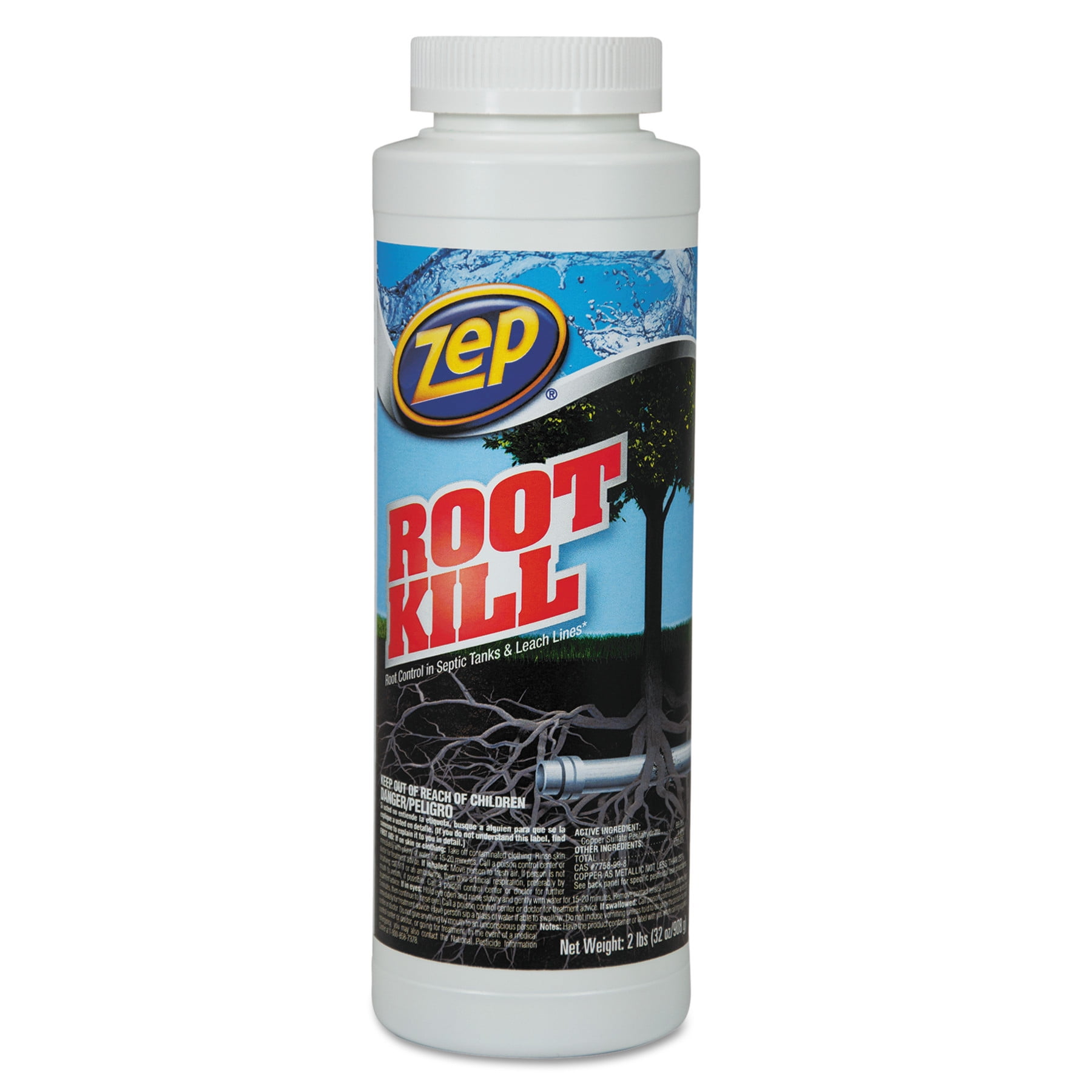
- #WHAT IS THE BEST ROOT KILLER FOR SEPTIC SYSTEMS REGISTRATION#
- #WHAT IS THE BEST ROOT KILLER FOR SEPTIC SYSTEMS PLUS#
- #WHAT IS THE BEST ROOT KILLER FOR SEPTIC SYSTEMS PROFESSIONAL#
#WHAT IS THE BEST ROOT KILLER FOR SEPTIC SYSTEMS PROFESSIONAL#
These are general guidelines and solutions which are based on our 35+ years of solving clogged septic systems through our professional septic contractor network. OK, now on to some possible solutions to your septic system problems. Of course your septic system backup will always happen when you are about to have guests arrive!ĭiagnosing septic tank problems is difficult, but here is a list of common problems associated with a backed up septic tank or a backed up septic drainfield.ġ.) Sludge build up from not pumping septic tank on a regular scheduleĢ.) Broken drain lines or broken septic tank bafflesģ.) Tree roots getting into cracks in the tank or around septic tank coverĤ.) Septic Filter clogging from not having it properly cleaned on a regular basisĥ.) Inadequate septic tank bacteria & septic enzyme populationsĦ.) Sludge and other solids leaving the septic tank without proper treatmentħ.) Grease capping from too much grease entering the septic systemĨ.) Bio-mat and or sulfite build up (Drainfield bio-mat balancing problem)ĩ.) Broken drainfield piping or compacted soilġ1.) Old septic tank designs and improper location of the drainfield
#WHAT IS THE BEST ROOT KILLER FOR SEPTIC SYSTEMS PLUS#
Septic system problems will result in messy cleanups, inconvenient smells and septic system odor in your house, plus possible septic tank replacement. Septic tank gas smell above your septic tank cover, septic tank lid or septic risers Gurgling sounds when flushing your toilets or slow running drainsĪctual septic sewage backups from toilets or other plumbing inside the building Septic tank smells inside building – septic tank odors coming from septic vent pipe Here is a list of the usual symptoms associated with septic tank problems or septic drainfield problems: Find out more about how a septic tank works and about septic tank care by watching this video. If you don’t have one call your septic tank installer, builder, or county where your septic tank permit is filed for a copy of the septic tank diagram. Make sure to always keep a copy of your septic system layout in your important papers file. Once you know the septic tank design and septic tank location of your septic system parts, you are ready to start diagnosing septic tank problems based on your system and the various septic parts. Before you begin diagnosing septic tank problems you should understand the septic system design and types of septic systems you have. Start by calling the septic company you use to have your regularly scheduled septic cleanout and septic field inspections. Your septic professional has the experience to diagnose a problem septic, and should be the first person you call when you have a failed septic tank or a failed septic system drainfield. There are plenty of stories about people being overcome by methane gases when dealing with a problem septic tank. If you don’t know what you are doing a failed septic tank can be a dangerous place.

Professional septic advice is recommended when you are septic tank troubleshooting or diagnosing a septic system failure. Septic backups could be as simple as clogs in your drain lines running to your septic system, or a clogged septic tank filter. Do you have a septic tank problem? Or do you have a drainfield problem? Or do you have a problem with a backed up septic system because of mechanical malfunctions. There are many variables to be reviewed when trying to diagnose a septic system problem. Then, pour liberal amounts of the Epsom salt mixture into the holes.“Diagnosing septic tank problems” is very difficult. Each hole should be roughly 10 inches deep. Next, drill about a dozen 1-inch-wide holes into the stump. What is the fastest way to kill a tree stump and roots?īegin the process by combining 100 percent Epsom salt with water to create a solution that will decay the stump's root system.
#WHAT IS THE BEST ROOT KILLER FOR SEPTIC SYSTEMS REGISTRATION#
Ask your plumber to send in the RootX registration card, and we'll send you a reminder after 11 months that it's time for your annual RootX treatment. You should treat your sewer lines or septic system every year. In respect to this, how often should you use root killer?

(It should take Foaming Root Killer, from 2 days to 1 week to clear your line) Your system must have some flow in order for the Foaming Root Killer to work properly.Īlso Know, what is the best foaming root killer? Best Sewer Line Root Killer Product This enables you to experience fast relief from your root problems. Regarding this, how long does it take for foaming root killer to work? How many times per year should I treat with K-77 Root Killer? Root killers should be applied twice per calendar year. If you are treating a sewer line the K-77 will treat a longer length of pipe line and one bottle of Foaming Root Killer only treats up to 50 feet of 4" pipe line.


 0 kommentar(er)
0 kommentar(er)
